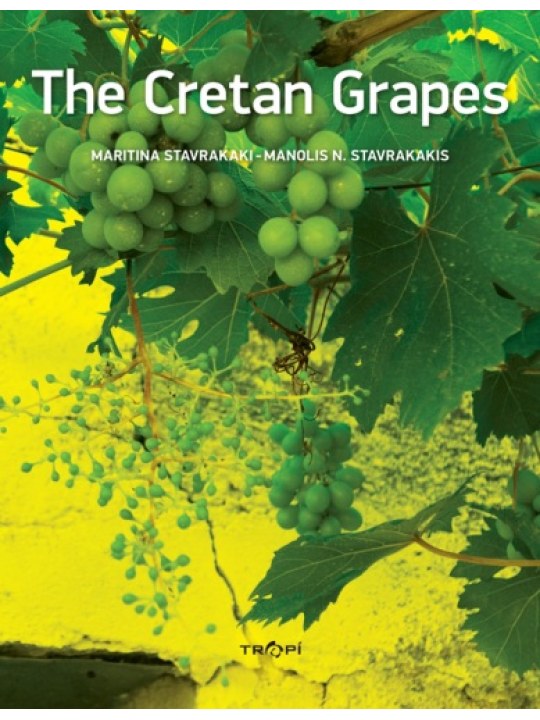The Cretan Grapes
An important book for the vineyard and the indigenous varieties of Crete, the first Cretan ampelography, written in the English language.
The Cretan grapevine varieties are presented for the first time, and this books covers a significant gap in the international literature, especially after the successful course of Cretan wines all over the world and the consequent increase interest of foreigners in acquainting these varieties. The introduction provides interesting facts about the history, the organization and structure, the surface area, the production of viticultural products and the contribution of the Cretan vineyard to the formation of the aesthetics of the rural landscape, the economy and culture of Crete. An important part of the Introduction is devoted to the comparative nomenclature and the matching of the names of the varieties, as recorded since the 14th century, to the present varieties.
From the citation of the detailed descriptions of the training and trellis systems of the vineyards, which prevailed from the interwar period and onwards, important information is retrieved on the viticultural practice and the gradual transition from the Cretan traditional vineyard of the period 1920-1950 to the linear vineyards, which, since the 1970s, spread rapidly and were combined with the introduction of foreign, mainly French, grapevine varieties.
The Ampelography of the Cretan varieties follows. The authors clarify from the outset which they consider as Cretan varieties. They state: “… The present study views as Cretan varieties those which have been documented or reported to have been under cultivation at least since the 11th century C.E., regardless of their area of origin. Those include 36+2 indigenous varieties of the Cretan land: Achladi, Akkiki, Akominato, Athiri,Athiri mavro (black), Begleri, Dafnato, Dafni, Dermatas, Diminitis, Eftakoilo, Gaidouria, Gemira, Katsano, Kotsifali, Ladikino, Lagorthi, Liatiko, Mantilaria, Melissaki, Moschato Spinas/Mazas, Mygdali, Petrachladi, Platani, Plyto, Romeiko, Syriki, Tachtas, Thrapsa, Thrapsathiri, Tsardana, Tsilores, Vidiano, Vilana, Voidomatis –The Soultani vine (Crete’s Soultanina), The Razaki grape. For each variety, the following are provided: origin and history, complete ampelographic description, aptitudes and cultivation suitability, quality characters of the grape, must and viticultural products, as well as photographs of the young shoot, mature leaf and bunch. Also, the latest research data from the ampelographic description and molecular methods are presented, regarding the genetic relation of the Cretan varieties, on the one hand in between them and on the other hand, in comparison with other Greek and foreign varieties. The extensive reference to the etymology of the name of each variety does not only have scientific but also literary/folk interest.
The Addendum includes “The Sultani Vine” and “The Razaki grape”, names that dominated Crete for Soultanina and Razaki, two emblematic grapevine varieties that were closely linked with the Cretan viticulturist, as well as a brief but comprehensive reference to the Cretan Malvasia, the famous Cretan wine which reigned in the European wine trade for four centuries, and which, some 700 years after its first production in Crete, still provokes enormous interest to ampelographers, viticulturists, winemakers and historians.

